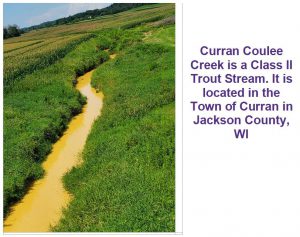U.S. Supreme Court Tosses Review of Minnesota County Fracture Sand Ban by Carolyn Davis, January 11, 2021, Natural Gas Intel
The U.S. Supreme Court on Monday denied a petition that sought to overturn a Minnesota county ordinance banning the mining of silica sand, which is used in some Lower 48 well completions.
Minnesota Sands LLC, which filed its initial lawsuit in 2017, was challenging an adverse ruling by the Supreme Court of Minnesota regarding Winona County’s ban imposed in 2016 (No. A18-0090).
Five years ago Winona County banned sand mining that was commercially “valuable for use in the hydraulic fracturing of shale to obtain oil and natural gas.” However, the county still allowed the same silica sand to be mined for “local construction” uses.
Minnesota Sands President Rick Frick at the time the company filed the initial lawsuit said, “Banning this type of mining based on the end use of this resource is not only unconstitutional, it takes away the rights of landowners and defies common sense…”
The ban has not changed the fact that the energy industry in the U.S. has dramatically recovered from recent economic challenges and there is now a growing need for the kind of silica we are lucky to have here.
“It has instead hurt people here and ignores the fact Minnesota already has a very rigorous and thorough approval and review process for any mining project.”
A divided Supreme Court of Minnesota last year ruled against the company and held that the ban did not violate the U.S. Constitution’s Commerce or Takings clauses.
Minnesota Sands appealed to the U.S. Supreme Court, arguing a “conflict with clear rulings” for similar lawsuits.
In addition, Minnesota Sands said the state ruling threatened “an industry that is vital to the nation’s energy supply.”
Minnesota Sands noted that its owner-investors hold leases with more than 360 million tons of monocrystalline silica sand that meets the American Petroleum Institute, or API, specifications for use as a proppant in hydraulic fracturing.
“The sand in the region is unique because it is extremely hard and round,” the company said. “It is made up primarily of quartz, making the processed sand extremely valuable for use in energy production in states outside of Minnesota as well as other markets like glass production and foundry use.”
The Southeast Minnesota Property Owners (SMPO) also challenged the county ordinance last March. The group represents Winona County residents who own or had stakes in silica sand deposits/processing. SMPO filed a lawsuit in Minnesota Third Judicial District claiming the ban violated “equal protection, due process and private property rights.”

Refer also to:
2020: Frac sand train yards and dust (harmful to health to breath in; cumulative COVID-19 impacts?)
“Gold Creek Reload,” 35 km south of Grand Prairie, Alberta:

Another yard, 25 km west of Grand Prairie, Alberta:

Photos by Will Koop. Are the workers wearing respirators? The frac industry lies, a lot and tells workers (and the innocent public) it’s safe, even when companies know it’s not.

2012 11 29: Mining Corporation Looks to BC for Frac Sand Open Pit Mine
2012 07 24: Sand rush: Wisconsin frac sand mining sites more than doubled in past year
